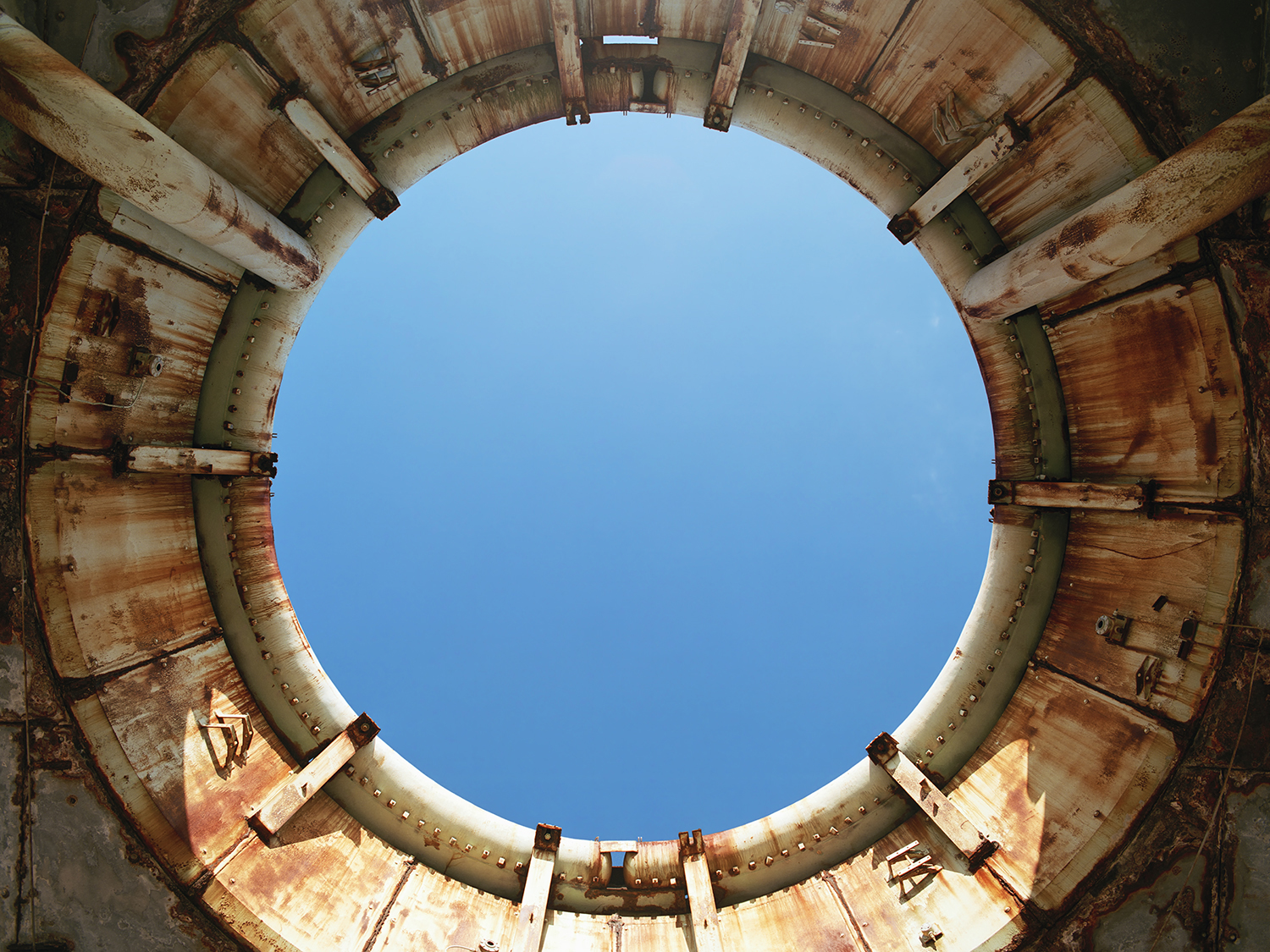ABANDONED IN PLACE
Roland Miller’s exploration of abandoned nasa facilities
ARTIST LECTURE JULY 11 AT 6PM
JULY 2 - AUGUST 17, 2019
ROLAND MILLER
Roland Miller, a Chicago native, studied photography at Utah State University earning his B.F.A. and M.F.A. degrees. For 14 years, he taught photography at Brevard Community College (now Eastern Florida State College) in Cocoa, Florida, where he was first exposed to many nearby NASA launch sites. He then taught at the College of Lake County in Grayslake, Illinois for six years before becoming dean of its Communication Arts, Humanities and Fine Arts division in 2008. Miller retired from higher education in 2018 to work full-time on his aerospace photography.
In 2016, Miller’s project, Abandoned in Place: Preserving America’s Space History, documenting the deactivated and repurposed space launch and test facilities around the United Stated was published by the University of New Mexico Press.
Images from Miller’s Space Shuttle documentary project, Orbital Planes, have been exhibited at the Southeast Museum of Photography in Daytona Beach, Florida and at The National Museum of Naval Aviation in Pensacola, Florida
Miller is currently completing a project, Interior Space, with Italian Astronaut, Paolo Nespoli, to collaboratively photograph the interior of the International Space Station.
Miller’s space-related photography has also been exhibited at the Kennedy Space Center Visitor Center, Florida; The Huntsville Museum of Art, Huntsville Alabama; The National Museum of Nuclear Science and History, Albuquerque, New Mexico; and numerous other art and science museums. Images from Miller’s space-related projects are included in the permanent collections of the Museum of Contemporary Photography, Chicago, Illinois; the NASA Art Collection, Washington, DC; the American Cultural Center, Xi’an International University, Xi’an, China: and numerous public and private collections.
Miller’s work has been featured in Smithsonian Air & Space Magazine, The New York Times, The Wall Street Journal, International Business Times, The Daily Mail, Wired.com, and numerous other national and international publications.
Abandoned In Place is a photographic exploration of the American space-launch and research facilities that played a crucial role in the early period of space exploration. The project serves not only as a documentary body of work, but also as an artistic interpretation of these historic sites. A unique combination of documentary, abstract, and hybrid images allows Abandoned In Place to be viewed from many perspectives. The exhibition records a vanishing era in both the space race and the cold war. The temporal nature of life is evident in views of decaying sites which once captured the attention of the entire world.
The facilities photographed in Abandoned In Place portray one of the most historic and technical adventures of the last century--from our first unmanned flights beyond the atmosphere to landing men on the moon. A sense of the urgency of the space race is evident in many of the images. Signs and labels in the images reflect the technology of the era. The structures depicted also recall the darker threat of nuclear war. Some of the images describe a future that could have been if the cold war had heated up. These launch complexes, engine test stands, and wind tunnels are the Bunker Hill and Gettysburg of the cold war. References to the Great Pyramids, Chichen Itza, Stonehenge, and other major archeological sites foreshadow the future of these modern ruins.
The goals of this project are to preserve and portray these abandoned sites through photography that surpasses the official government approach to documentation, and to lend some social, historic, and artistic insight to the subject.
One of the unique aspects of Abandoned In Place is the combined utilization of documentary and abstract approaches to the subject. This blended approach helps tell a more complete story of the effort to begin exploring space. The serendipity of juxtaposed objects and text on signs conveys a subtext beyond the documentary objectives of the work.






